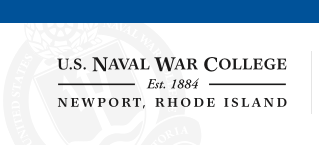Title
Document Type
Book
Publication Date
4-2012
Number
38
Abstract
Following its defeat on the mainland in 1949, the Nationalist government retreated to Taiwan. Although the Nationalist navy was comparatively large, to many it seemed almost certain that the People's Republic of China (PRC) would attack and take Taiwan, perhaps as early as summer 1950. The Korean War began on 25 June 1950, however, and the possibility of a PRC invasion of Taiwan was countered when on 27 June President Harry S. Truman ordered the Seventh Fleet to "neutralize" the Taiwan Strait. Mao Zedong at first postponed and eventually canceled altogether his planned invasion of Taiwan.
The U.S. Navy's Taiwan Patrol Force operation lasted from summer 1950 until at least 1979, arguably even sporadically after that date. Lasting twenty-nine years, the Taiwan Patrol Force was one of the longest naval operations in modern history. It was also one of the most successful, since -- as the most obvious symbol of American power -- it ensured that friction over the Taiwan Strait did not escalate into a full-blown war. In fact, the Taiwan Patrol Force did its job so well that virtually nothing has been written about it. U.S. Navy ships acted both as a buffer between the two antagonists and as a trip wire in case of aggression. The force fulfilled the latter function twice in the 1950s -- during the first (1954-55) and second (1958) Taiwan Strait crises -- and a third time in the next decade (1962), at which point additional U.S. Navy vessels were called in to assist. Even after the Taiwan Patrol Force was terminated in 1979 it continued in spirit, as shown by a fourth Taiwan Strait crisis.
During the PRC missile tests of 1995-96 two U.S. aircraft carriers were deployed to the area, and in 2001, during the ten days of negotiations over the EP-3 incident of 1 April, a carrier was almost sent. As recently as 2009, when maritime tensions between an American survey ship and Chinese vessels threatened to escalate into a larger conflict, a U.S. Navy destroyer was sent to the scene. Thus, the patrolling functions that began in 1950 have continued largely unchanged to this day, as U.S. Navy vessels act to influence China's military, economic, and political relations with its maritime neighbors.
Recommended Citation
Elleman, Bruce A., "High Seas Buffer" (2012). The Newport Papers. 38.
https://digital-commons.usnwc.edu/newport-papers/16

